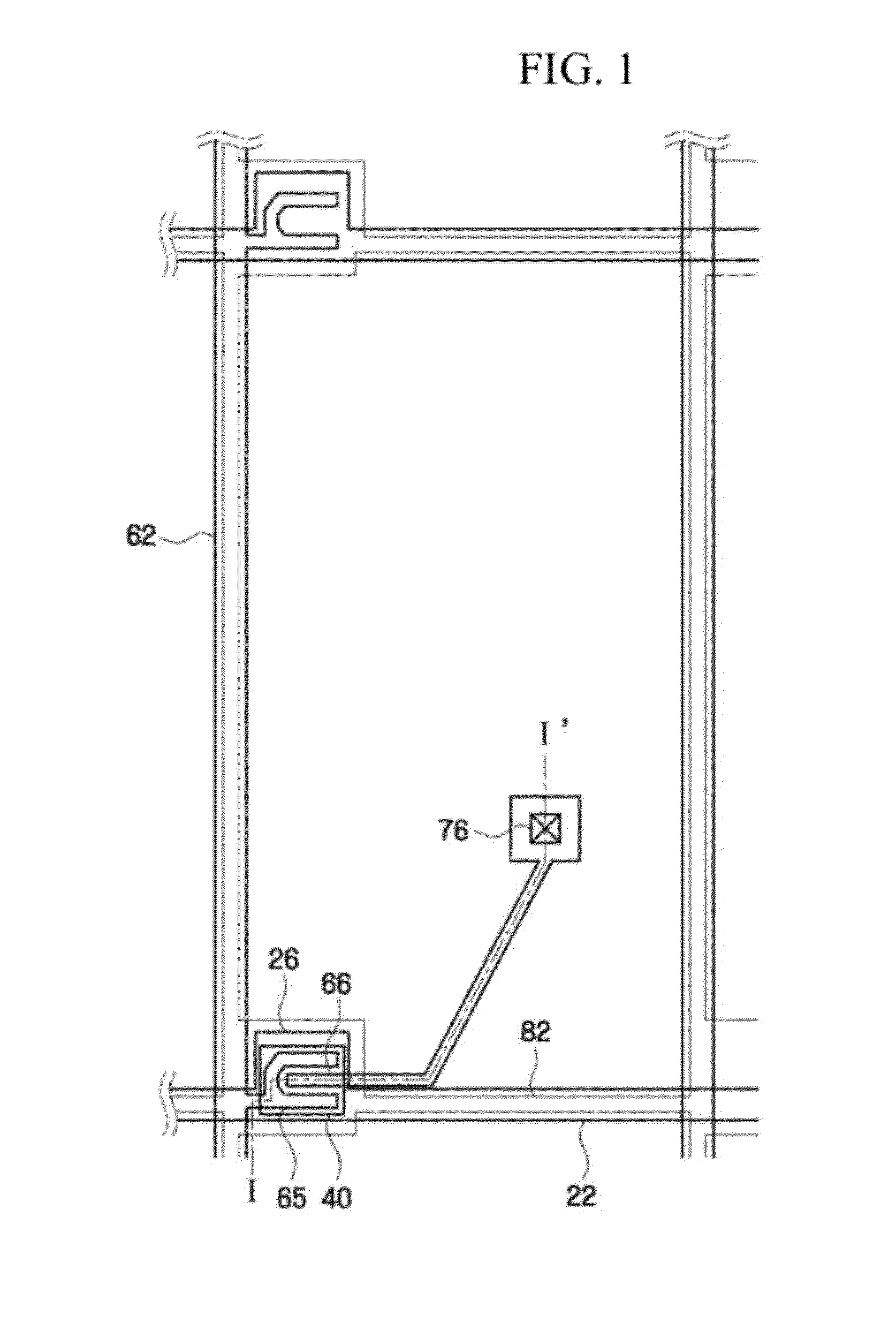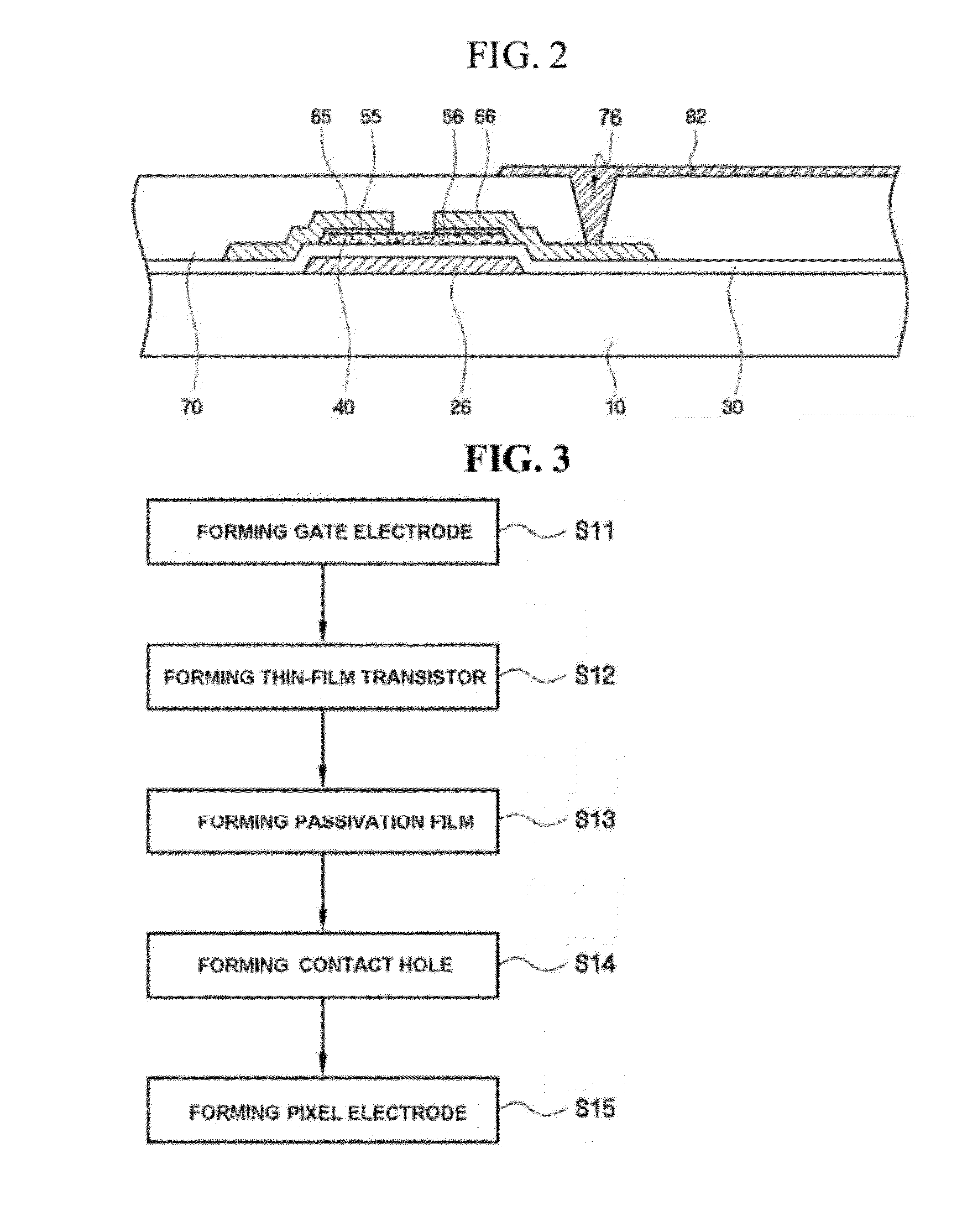Thin-film transistor substrate and method of manufacturing the same
a thin film transistor and substrate technology, applied in the field of thin film transistor substrates, can solve the problems of increasing contact resistance, high equipment costs, and increasing and achieve the effect of reducing the size of the photoresist pattern
- Summary
- Abstract
- Description
- Claims
- Application Information
AI Technical Summary
Benefits of technology
Problems solved by technology
Method used
Image
Examples
example 1
Observation of the Profile of a Contact Hole
[0094]1-1) A passivation film was formed of SiN to a thickness of approximately 1,000 Å. Then, a photoresist film was formed by coating a photoresist composition (AZ-EM) on the passivation film to a thickness of approximately 1.5 μm using a slot die method. The photoresist film was exposed to light using a self-manufactured optical mask. A portion of the photoresist film which was not exposed to light was washed and removed using a tetramethylammonium hydroxide (TMAH) aqueous solution, thereby obtaining a photoresist pattern. The photoresist pattern was dry-etched for approximately 80 seconds using a gas containing SF6 and N2. As a result, a contact hole was obtained. A sidewall profile of the contact hole was observed using focused ion beam (FIB)-scanning electron microscope (SEM). The observation results are shown in FIG. 17 for four different positions on a substrate.
[0095]1-2) A photoresist pattern was obtained in the same way as the m...
example 2
Quality Evaluation of a Liquid Crystal Display (LCD) Including a Pixel Electrode Made of a Carbon Nanotube Composition
[0097]A contact hole was formed using the method specified in section 1-2 of Example 1. Then, a carbon nanotube composition was coated on an SiN passivation film and the contact hole using a process, and was then annealed for 30 minutes at 180° C., thereby forming a carbon nanotube film. Next, photoresist (AZ-EM) was coated on the carbon nanotube film using a slot die method to form a photoresist film, and the photoresist film was exposed to light using a self-manufactured optical mask. An unexposed portion of the photoresist film was washed and removed using a TMAH aqueous solution. Then, an exposed portion of the carbon nanotube film was etched using O2 reactive ion etching (RIE) (80 mTorr, 800 W, an O2 flow rate of 400 sccm, and 30 seconds), and the remaining portion of the photoresist film was washed using the TMAH aqueous solution to obtain a patterned pixel ele...
PUM
| Property | Measurement | Unit |
|---|---|---|
| thickness | aaaaa | aaaaa |
| temperature | aaaaa | aaaaa |
| length | aaaaa | aaaaa |
Abstract
Description
Claims
Application Information
 Login to View More
Login to View More - R&D
- Intellectual Property
- Life Sciences
- Materials
- Tech Scout
- Unparalleled Data Quality
- Higher Quality Content
- 60% Fewer Hallucinations
Browse by: Latest US Patents, China's latest patents, Technical Efficacy Thesaurus, Application Domain, Technology Topic, Popular Technical Reports.
© 2025 PatSnap. All rights reserved.Legal|Privacy policy|Modern Slavery Act Transparency Statement|Sitemap|About US| Contact US: help@patsnap.com



